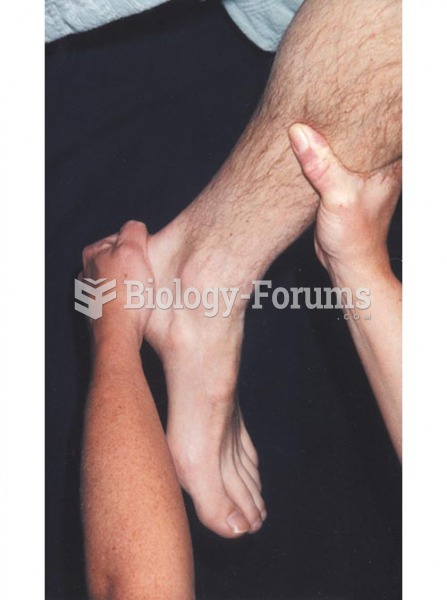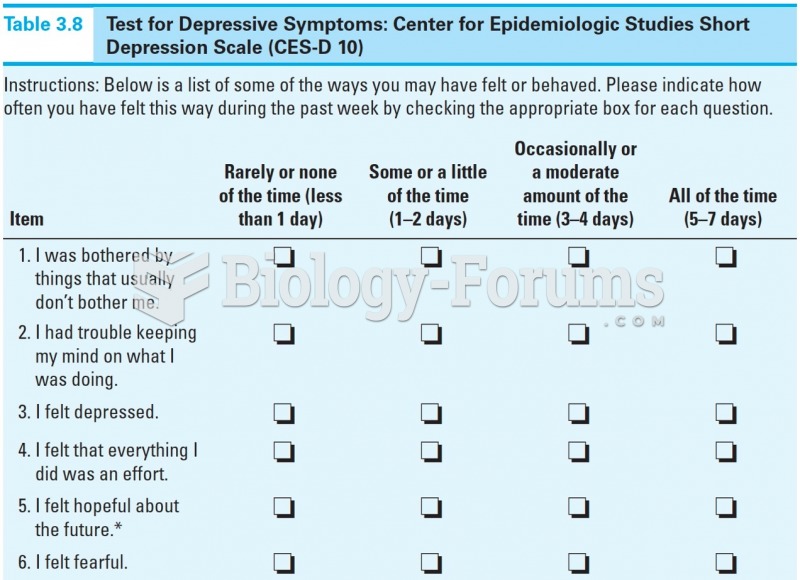Answer to Question 1
Ans: B
Feedback:
The 2005 tuberculosis (TB) infection control guidelines emphasize actions to maintain momentum and expertise needed to avert another TB resurgence and to eliminate the lingering threat to healthcare personnel, which is mainly from clients or others with unsuspected and undiagnosed infectious TB disease. A sample recommendation is that the term tuberculin skin tests be used rather than purified protein derivative. The scope of settings in which the guidelines apply has been broadened to include laboratories and additional outclient and nontraditional healthcare settings. These recommendations also apply to an entire healthcare setting rather than to areas within a setting.
Answer to Question 2
Ans: A, B, C
Feedback:
The probability that a person who is exposed to Mycobacterium tuberculosis will become infected depends primarily on the concentration of infectious droplet nuclei in the air and the duration of exposure to a person with infectious TB disease. The closer the proximity and the longer the duration of exposure, the higher the risk of becoming infected. Close contacts are people who share the same air space in a household or other enclosed environment for a prolonged period (days or weeks, not minutes or hours) with a person with pulmonary TB disease. A suspected TB client is a person in whom a diagnosis of TB disease is being considered, whether anti-TB treatment has been started. People generally should not continue to be suspected of having TB for more than 3 months. The use of safety gloves and physical exertion on the job do not affect the probability of infection.







